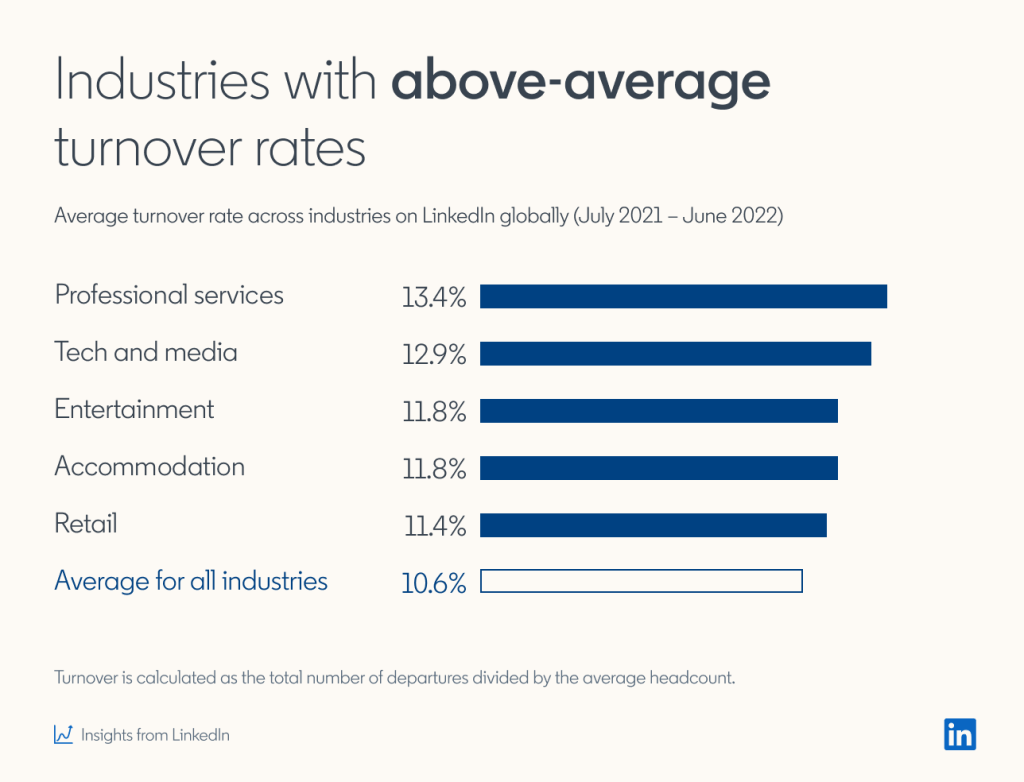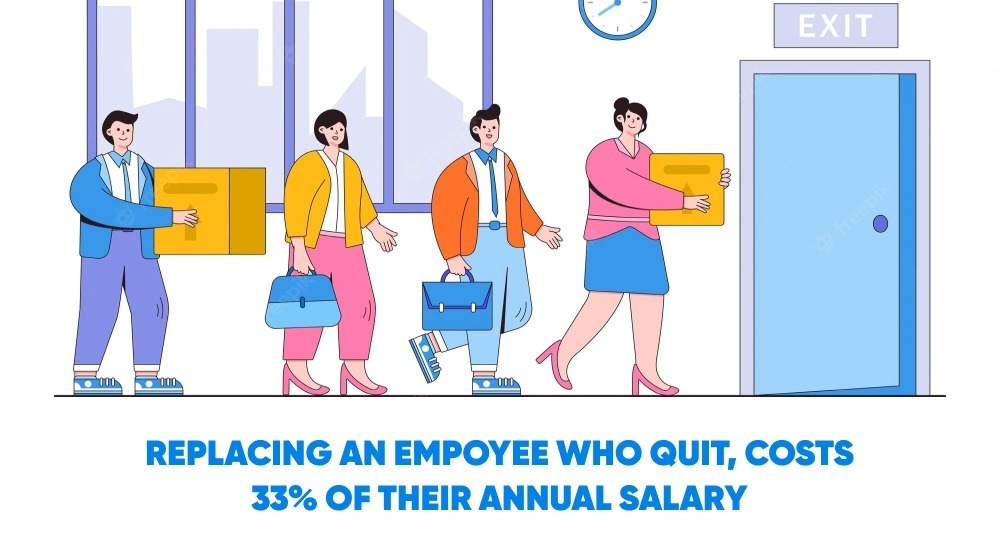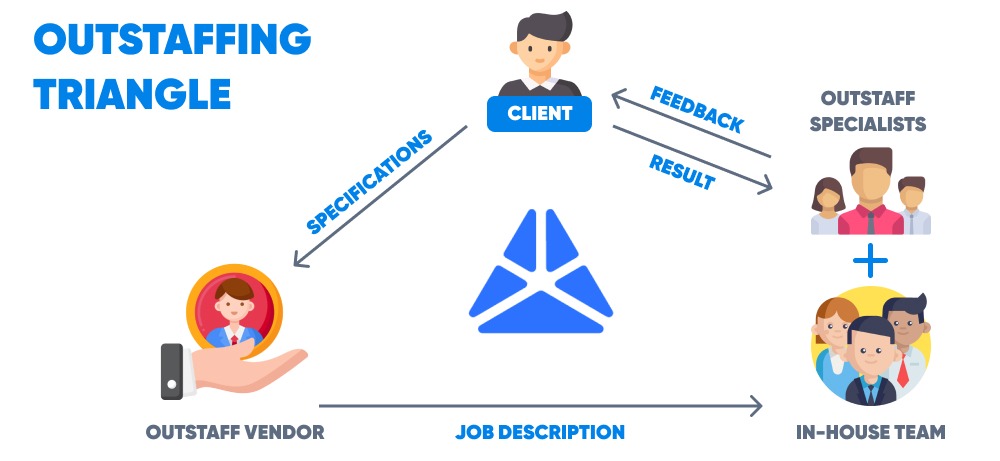
It might sound counterintuitive, but hiring outstaff teams is often much easier than retaining them. With this being said, employee retention remains the key to the successful cooperation of your business and your IT vendor, which provides you with dedicated or time-and-material teams.
As the people who get things done by augmenting software development teams with new professionals, the retention rate of the specialists on our projects is the crux of the matter for us. Maintaining a high bar (87% retention rate), we would like to share our perspective and some of the best practices on the ever-relevant issue of employee retention – since getting the right talent is just half of the battle.
Digest of Employee Retention on the Global Market
According to the Human Research Executive, the search for the right talent is a top priority for at least 62% of tech companies. Indeed, companies concentrate significant forces on that aspect — sometimes to the extent that when scanning companies on Linkedin potential candidates may find more recruiting specialists than actual employees. Even so, what percentage of their employees actually retain and stick around?
Statistics say that each month in the US alone, 3 to 4.5 million employees quit their job. That’s quite a disturbing signal considering that one-third of new employees globally quit after about six months. When it comes to turnover rates in different fields, the above-average turnover rates have professional service (13,4%), tech and media (12.9%), entertainment (11.8%), accommodation (11.8%), retail (11.4%) – the average turnover rate of all industries is 11.6%.

Industries with above-average turnover rates | Source: Greg Lewis | Linkedin
What happens when they leave?
According to Employee Benefit News, it costs 33% of a worker’s annual salary to replace an employee if they leave. The root of this problem may seem more complicated than just low salary, bonuses or career opportunities.

The Price of High Employee Turnover | Source: Employee Benefit News
Millennials (over a third of the global workforce) indeed appreciate flexible work and many people indicate the absence of such as the major reason for quitting. However, according to a study conducted among 7,000 U.S. adults at some point in their career, 50% of them had quit their job to get away from a bad manager. In 2022, two in five employees quit because of a bad manager. Here is the point when it’s time to investigate what bad management is.

Employee Retention in Global Outstaff Teams | Source: giphy
Bad management is a broad concept that may include tension in the relationship with the supervisor at work, feeling of devaluation of one’s work or unequal treatment of employees in the team. Often, a manager can be guided only by personal ambitions and not worry about the well-being of the team. In a way, all these factors are responsible for a toxic work environment which is currently the top reason for quitting according to a Flexjobs survey of 2,202 workers.
- Toxic company culture (62%)
- Low salary (59%)
- Poor management (56%)
- Lack of healthy work-life boundaries (49%)
- Not allowing remote work (43%)
Like it or not but the majority of processes in an organization start with the head figure of what a manager is. In addition, there is a proven link between employee and manager engagement, as according to statistics, employees who work for engaged managers are 59% more likely to be engaged. In turn, managers who work for engaged leaders are also 39% more likely to be engaged.

Employees and managers’ engagement influence | Source: Gallup Employee Engagement Survey
What is a Healthy Turnover Rate?
No matter how hard you try, people come and go. Moreover, they say that teams that are almost entirely composed of employees with many years of experience are as harmful to business as high staff turnover. That is why there is an average rate of staff turnover rate, which should not exceed 10% – this indicator is a very healthy indicator of staff turnover in all directions.
Speculating on frequent reasons for quitting, it’s also interesting to name reasons that frequently make employees retain. The letter, according to the 2021 Engagement and Retention Report include:
- work-life balance (23%)
- recognition (21%)
- compensation (19%)
- satisfactory working relationship with their manager (19%)
What is employee retention: How to Сalculate Your Retention Rate
The terms “retention rate” and “turnover rate” are often confused. In reality, the retention rate shows how long specific employees stick around in the organization over a while (generally yearly). Meanwhile, the turnover rate indicates the average number of specialists leaving the company over a certain period. Employee turnover statistics can give companies the insight they need to shape their retention strategy. Having both retention and turnover data, HR specialists can get a complete picture of staff retention in their organization.
How can the retention rate in a particular organization be determined? Let’s do some math.
To calculate the retention rate in a company, it is enough to divide the number of employees retained at work during the entire measurement period by the number of employees present at the beginning of the measurement period) and multiply this number by 100. (for example, 24/65×100).

However, when making calculations, it is important to keep in mind that the data should be based on the people who were present on both the beginning and last days of the period. Since the purpose is to track the retention of people who were employed on the first day of the measurement period, any employees recruited during the measurement period shouldn’t be considered.
A similar formula can serve to calculate the turnover rate. Namely, the number of quits during the measurement period is divided by the average number of employees present during the same measurement period and multiplied by 100. (for example, 15/45×100).

Talent Retention in Outstaff Teams
Outstaffing is one of the most popular outsourcing software development models, and a dedicated team works on customers’ premises under the supervision of an outstaffing provider.
During outstaffing, employee retention is even more relevant as employees act as the extension of the customer’s core team. In a way, an employee works in a triangle between the customer, the employee, and the software developer. That’s why an outstaff employee risks facing some extra difficulties, from poor communication and different time zones to simple misunderstandings or tensions in relations with a foreign team and, most importantly, a lack of integrity with the customer.

Outstaffing Triangle
This issue takes a global nature as businesses prioritize rapid scale over the world. The need to quickly conquer international markets prompts companies to allocate additional resources to employees and attract new talents to companies.
In this regard, outstaffing is a cost-efficient option (60% reduction in labor cost) that provides access to a wide range of specialists in different technical areas and eliminates the need to take on HR functions with the new staff.
At the same time, the wrong outstaff development team choice can lead to extra expenses, project delays, poor product quality, and many others. Thus, organizations and managers understand the importance of implementing an effective retention program.
Employee Retention Program According to MWDN
We Start with Hiring the Right People
Hiring the right employee for every job is critical for every organization. A wrong decision can result in the loss of valuable time and money, while the right choice can boost a company’s growth and have a positive impact on the work environment. However, getting access to the wider pool of talents doesn’t make it easier to find ‘the one’.
If you ask, any outstaff/outsource service provider has its method of finding the right talent, but there is no doubt that, above all, an employee must fit the culture of the organization or team they are about to join. In addition, an outstaff service provider should have vast expertise and background in global recruiting and hiring – a rich experience in finding tech talents in the different software development areas.
In addition, during outstaffing, customers also have the option to decide who is the best fit for their project,t which releases a lot of positive energy right at the jump start.
We Ensure Proper Communication and Good Management
Future communication is one of the most important aspects of a team’s future success. This applies to communication among subordinates and to communication between the manager and employees. For example, effective onboarding alone increases retention levels by 82%. The challenge of proper communication is especially relevant in outstaff and remote teams. In this regard, setting clear demands, deadlines, and plans makes communication within the team much easier. In addition, let’s remember that life shows there are various situations (like war, epidemics, etc) that can be potentially dangerous for businesses and industries, but setting up the right strategy can be your lifeline.
- For example, when working with a remote team that is in a different country, time zone, etc., it’s a good idea to immediately determine the times and dates when you will communicate.
- In addition, it’s worth taking care of possible cultural differences between a core and extended team. For example, depending on the country, work schedules may differ, people may not always be able to instantly reply to messages due to the time difference, or on certain days, communication may be generally impossible (neither written nor oral) because of the public holidays.
Luckily, all these aspects, including support and management of the outstaff team, are typically covered by an outstaff service provider who also helps to prioritize tasks into urgent and non-urgent tasks, fostering better communication.
Clear Paths to Professional Growth
Outstaffing itself provides quite simple opportunities for career growth for those who step on this path. A proper staff provider constantly finds new clients, gets new interesting projects and challenging tasks. Each of these projects requires a whole team and dedicated specialists. Traveling from project to project, an employee can improve their professional skills and grow quite quickly. Employees in outsourced teams do not have to work for decades in the same position to finally get a long-awaited promotion.
At the same time, an employee constantly gets new tasks and interesting projects with a new stack of technologies, which eliminates routine in their work. With that in mind and a good vendor, outstaffing teams can become a great place for personal and professional development. An experienced provider, like in the MWDN case, usually helps choose a project that suits employees’ interests and helps them apply their experience and knowledge in the best way possible. In the end, fostering careers makes 50% of employees stay.
Keep Your Staff Motivated
An important attribute of outstaff teams is the motivation of team members. To motivate a group of extended employees to work more and better, it is important to treat them as individuals and define their goals, values, and incentives. Some of them dream of recognition, others of financial well-being, and others of promotion. This data can be found by using questionnaires, assessments, and other methods of interview,
To establish proper communication between the customer, the team, and the vendor, it is worth reminding that all parties are united by a common goal. That becomes possible when employees have the opportunity to offer their ideas, which allows them to feel involved in the implementation of the company’s strategic tasks and increase their responsibility for the quality of work.
This communication should also include informal communication,n which should happen at least once a week. It can be a coffee party, master class, or lecture where many, in fact, many find out they have much in common.
Choose MWDN As the Outstaff Service Provider
Over 20 years as a staff software development provider, MWDN extended teams in more than 50 companies. Over 200 software engineers already work with MWDN, and this number grows every day – all of them have a 65% retention rate on their projects. Our approach includes regular support to set up communication and manage the extended teams most efficiently. Contact us to learn more about our strategy of building strong, long-lasting relationships in the staff teams – connecting tech talents around the world.
